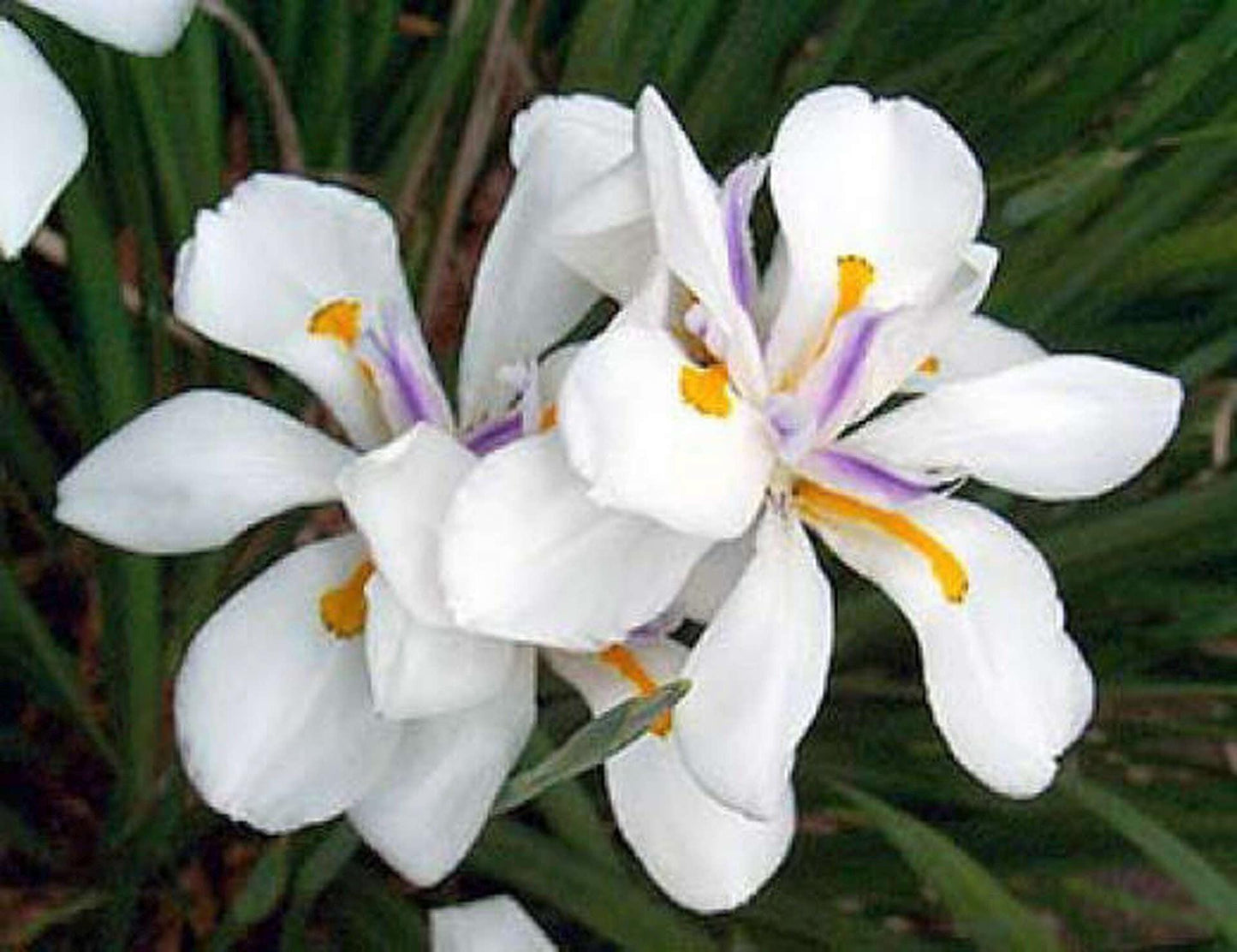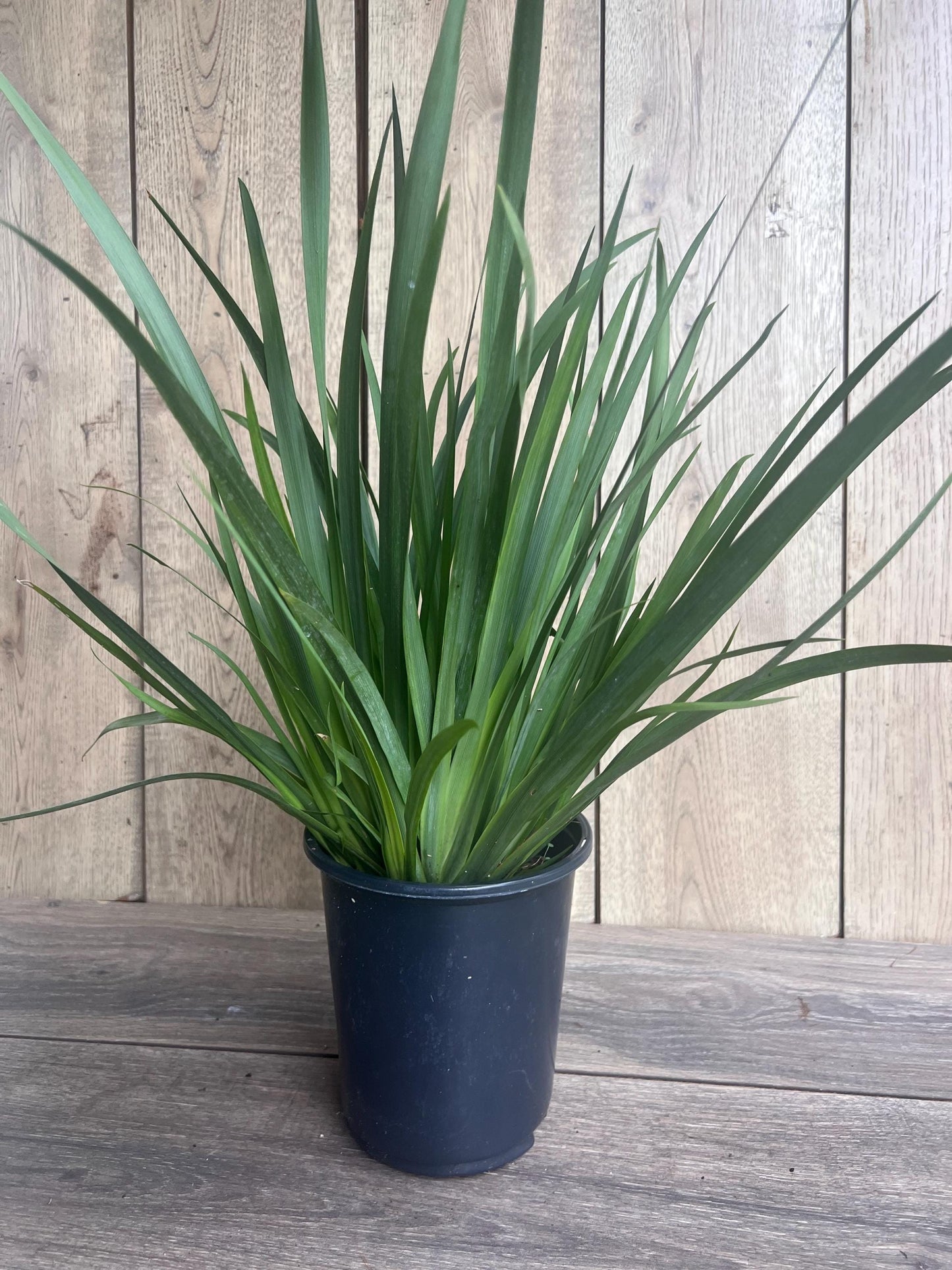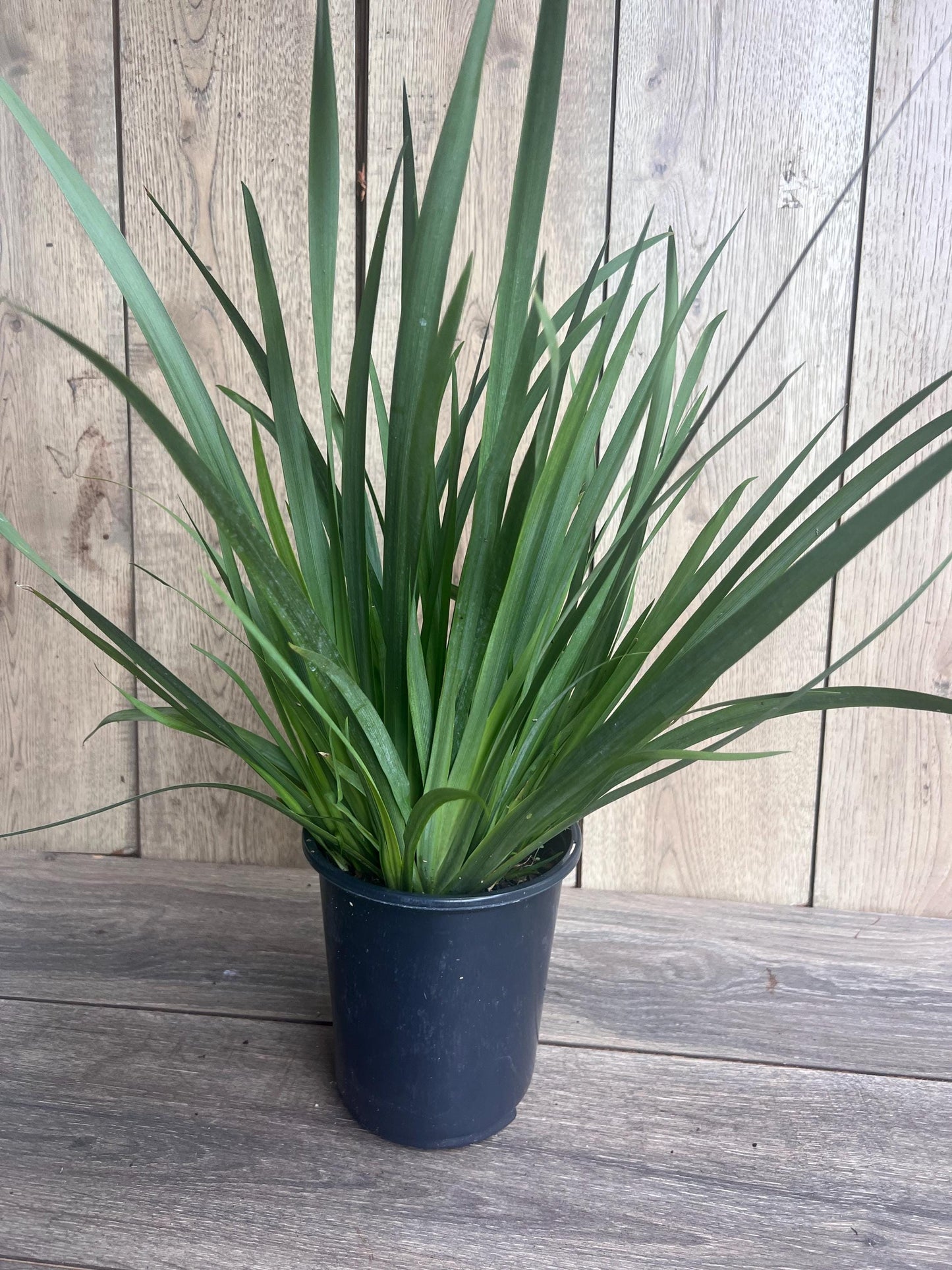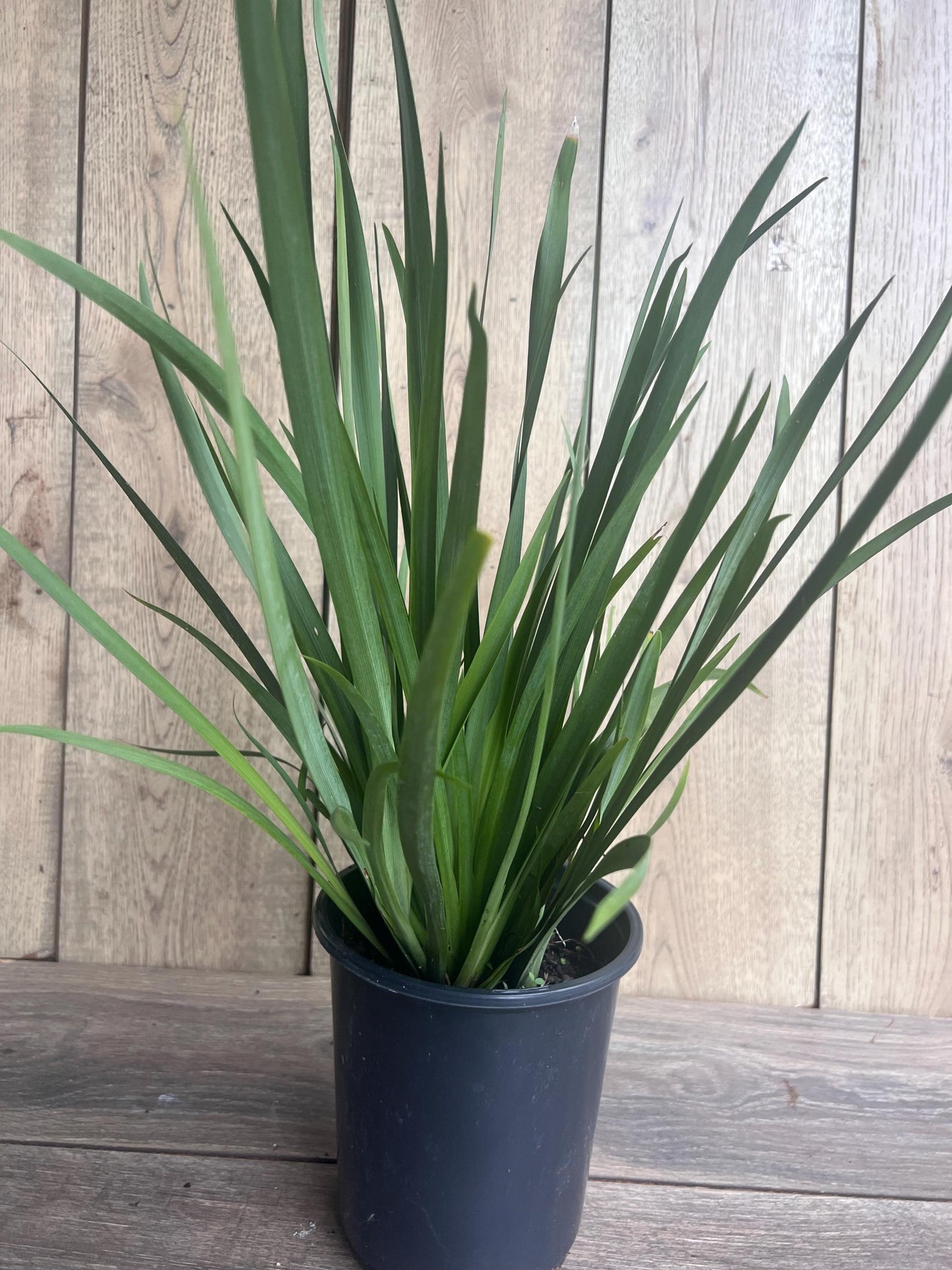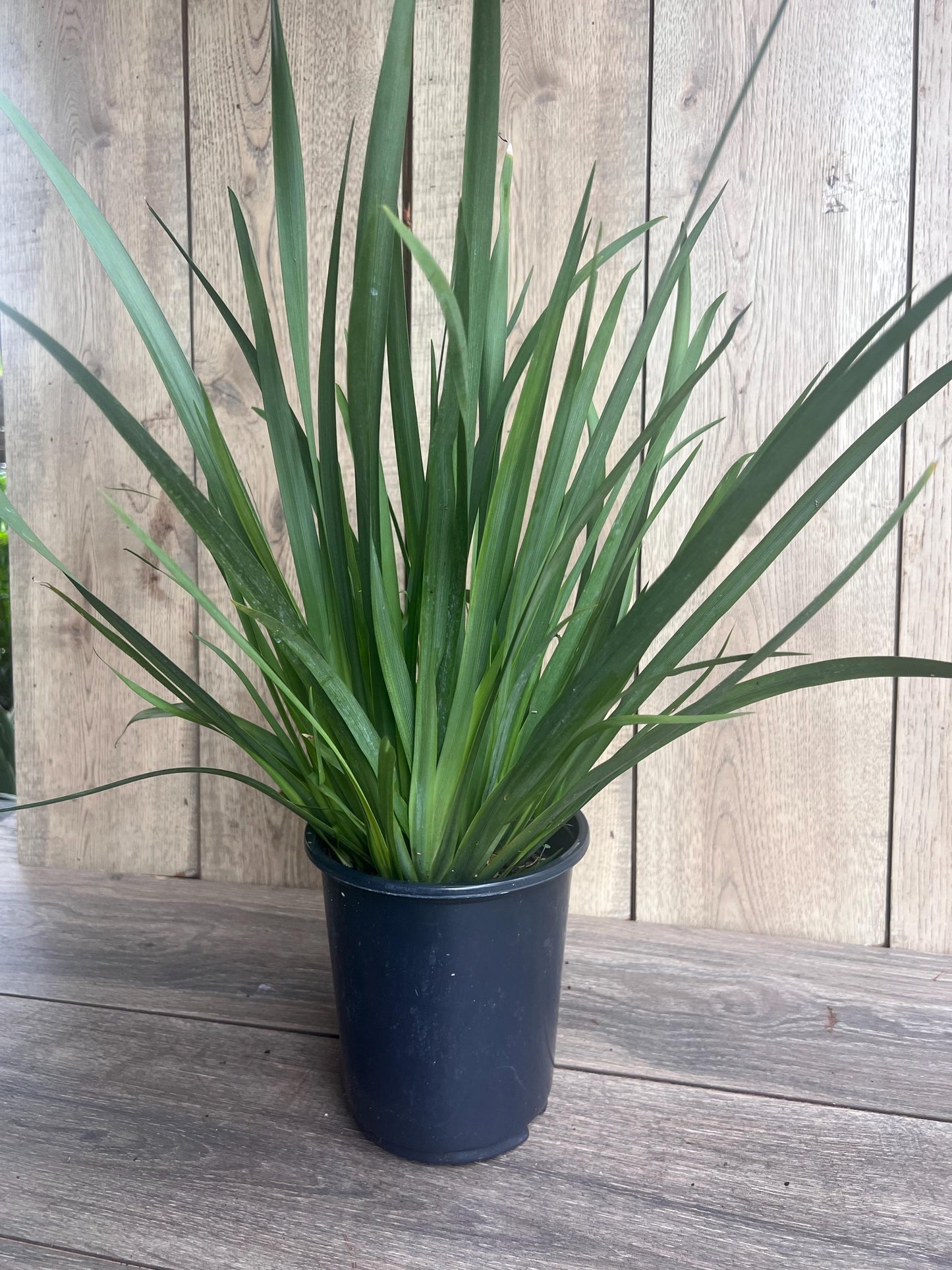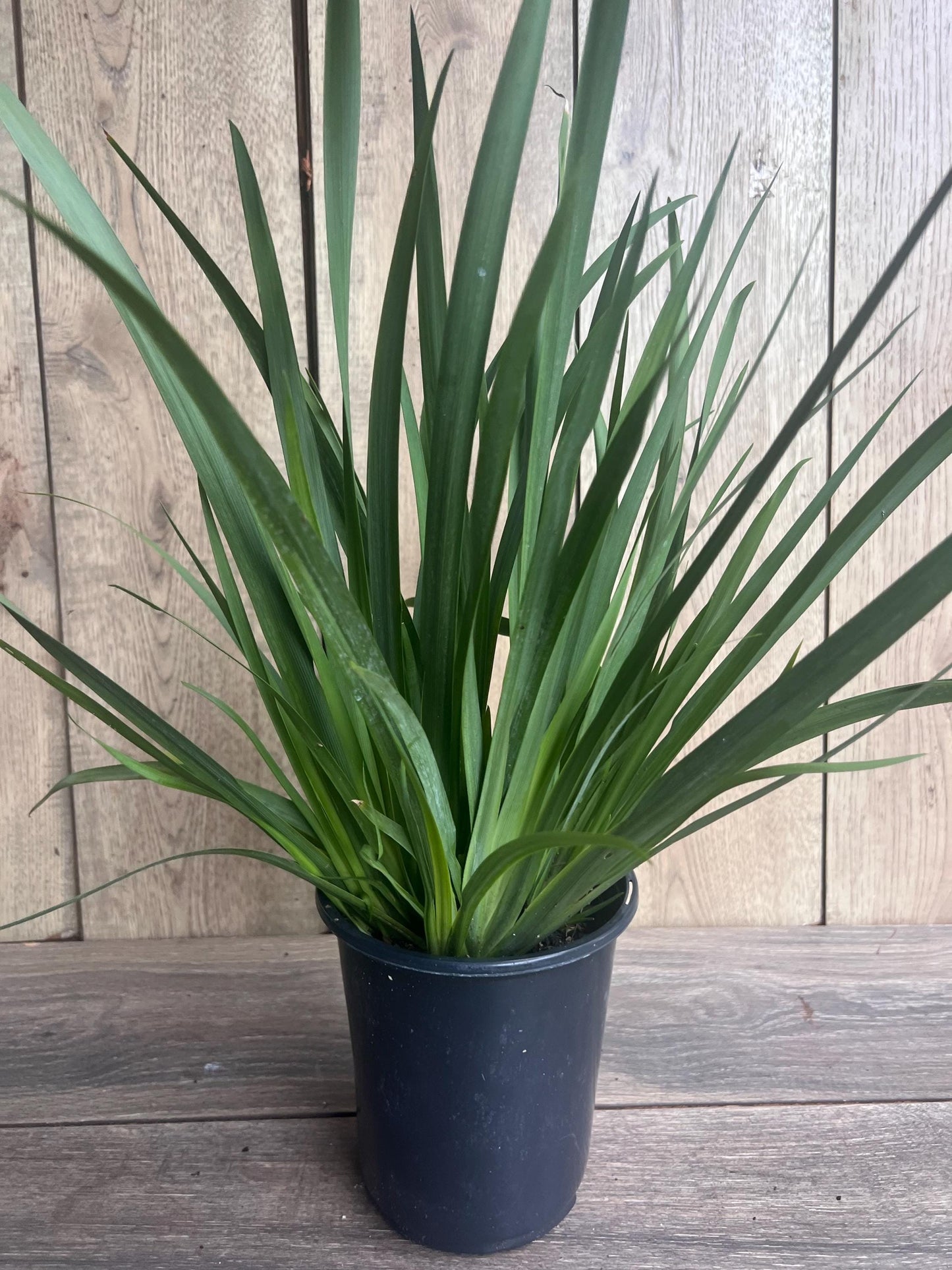White African Iris, Dietes Iridioides, Fortnight Lily, African Iris White in 6" Pot
White African Iris, Dietes Iridioides, Fortnight Lily, African Iris White in 6" Pot
Couldn't load pickup availability
Note: You will receive white African Iris in 6" similar to the pictures
The White African Iris (Dietes iridioides) is a striking perennial native to South Africa, known for its elegant, showy white flowers with delicate purple markings at the base of the petals. These flowers resemble irises but are part of the Iris family, offering a refined, almost orchid-like appearance. The plant forms clumps of long, narrow, arching leaves that resemble grass, which grow in tufts from a rhizomatous root system. White African Iris is highly adaptable, thriving in a variety of soil types, from well-drained sandy soils to heavier clay, and is tolerant of both drought and light frost once established. It prefers full sun to partial shade, with blooms typically appearing from late spring to early summer. Low-maintenance and resistant to pests, this perennial is ideal for xeriscaping, mass plantings, or as a border plant in garden beds. Its resilience, combined with its beautiful flowers and graceful foliage, makes it a favorite in tropical and subtropical gardens worldwide
Caring for White African Iris (Dietes iridioides) is relatively straightforward, as this hardy perennial is known for its low-maintenance nature and resilience. Here’s a care guide to help you grow a healthy and thriving White African Iris:
-
Light: White African Iris thrives in full sun to partial shade. It will bloom best with at least 4-6 hours of direct sunlight each day, though it can tolerate some shade, especially in hotter climates. In areas with intense sun, partial shade during the hottest part of the day will help prevent leaf scorch.
-
Soil: This plant is adaptable to a wide range of soil types, from sandy to clay soils, as long as the soil is well-draining. It can tolerate slightly alkaline or acidic conditions but will perform best in neutral to slightly acidic soils. While it can handle drought conditions once established, it prefers moist, well-drained soil.
-
Watering: Water the White African Iris regularly during the growing season, especially in hot weather. While it is drought-tolerant once established, consistent moisture is ideal for optimal growth and flowering. Avoid waterlogging, as this can lead to root rot. In cooler months or during the plant's dormant phase, reduce watering, allowing the soil to dry out between waterings.
-
Temperature: This plant thrives in tropical and subtropical climates but can tolerate light frost once established. It prefers temperatures between 60°F and 85°F (15°C to 29°C). In colder regions, it may need to be grown in containers that can be brought indoors during freezing weather or treated as an annual.
-
Fertilization: White African Iris is not a heavy feeder, but it will benefit from occasional feeding during the growing season. Use a balanced, slow-release fertilizer or a fertilizer formulated for flowering plants, applying it in early spring and again in mid-summer to encourage blooms. Avoid over-fertilizing, as too much nitrogen can result in lush foliage at the expense of flowers.
-
Pruning: Prune the plant back in late winter or early spring before new growth starts. Remove any dead, damaged, or yellowing leaves and spent flower stalks to keep the plant looking tidy and encourage new growth. Cutting back old leaves also helps to prevent pests and disease buildup.
-
Pests and Diseases: White African Iris is relatively pest-resistant, though it may occasionally attract aphids, snails, or caterpillars. Inspect the plant regularly for any signs of pest infestation and treat with insecticidal soap or neem oil if necessary. It can also suffer from fungal diseases like root rot if left in waterlogged soil, so good drainage is key to preventing this.
-
Dividing and Propagation: White African Iris can be propagated by dividing the clumps every 2-3 years to maintain its vigor. Dividing also helps prevent overcrowding and allows you to spread the plant throughout your garden. The best time to divide is in early spring or after the blooming period.
With minimal care requirements, White African Iris makes an excellent addition to garden beds, borders, or as a feature plant in tropical and subtropical landscapes. It’s a great choice for low-maintenance gardens, requiring only occasional watering, light pruning, and periodic feeding to keep it flourishing and producing its lovely white flowers.
Share
